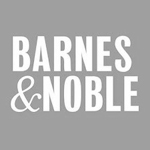They were all born in Burma. They eat Burmese food and like it as much as their Burmese friends. They speak Burmese more fluently than their mother tongue. They dressed Burmese loungi (loose garment tied around the waist by both males & females) and tunic, unlike his forefathers who used to wear Dhoti, Pajama or Sari prevalent throughout India, still they have been forcibly identified & separated from masses and forced to think that they belong to somewhere else.
Daw Aung San Suu Kyi returned to Burma in 1988, to lookafter her ailing mother who died later. Her funeral attracted large number of people weeping and chanting slogan in favor of late General Aung San. This love and affection of Burmese people forced Daw Aung San Su Kyi to lead the pro-democracy movement, to liberate Burmese people from the clutch of dictators once again, similar to independence movement lead by General Aung San to liberate Burmese people from British occupation forces. In the first public speech in Rangoon, she addressed half a million people outside Shwedagon Pagoda, calling for democratic government. On April 5, 1989 while addressing the Burmese people in Irawaddy Delta, the gathering was surrounded by the army personnel aiming their guns towards Daw Aung Su Kyi when she courageously walks toward the soldiers aiming their gun at her, but none of them dared to pull the trigger, because military rulers were afraid of her popularity and support by masses. Strict orders were reportedly issued to soldiers not to shoot but to scare her off. This was the turning point for Burmese people. It was the beginning of an end of dictatorship and return of democracy in Burma.





